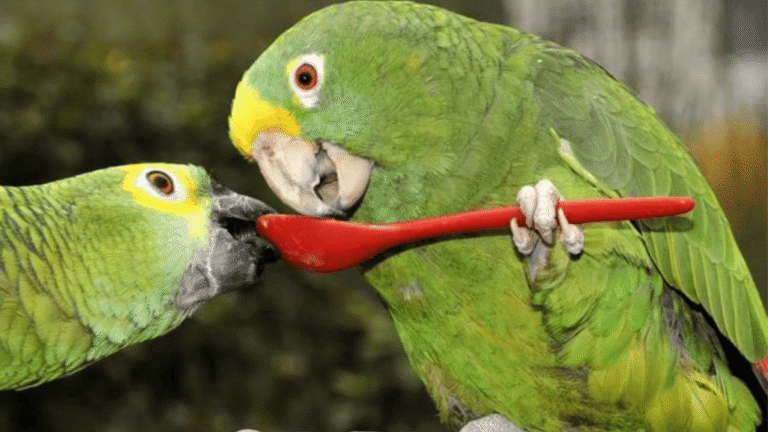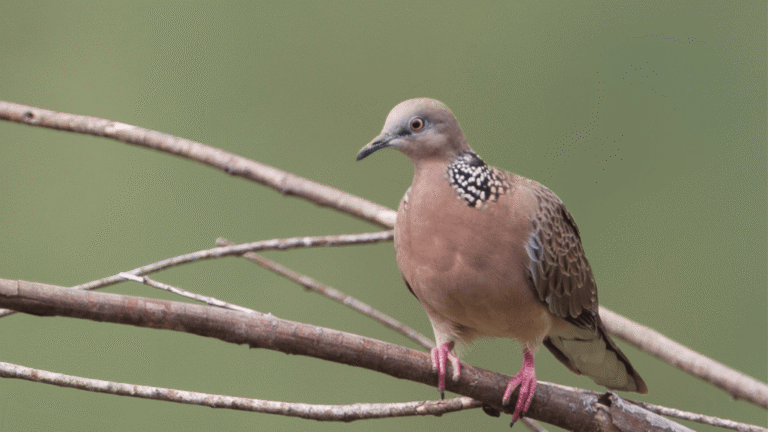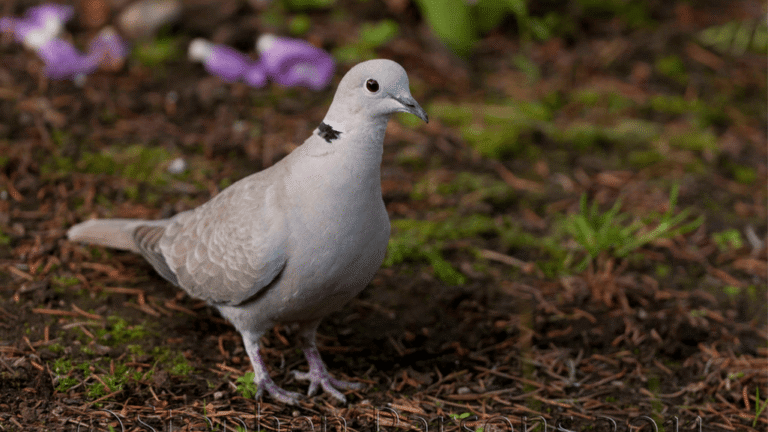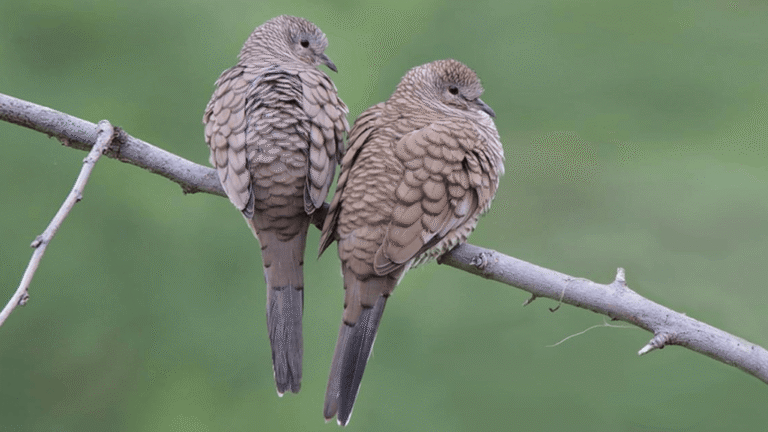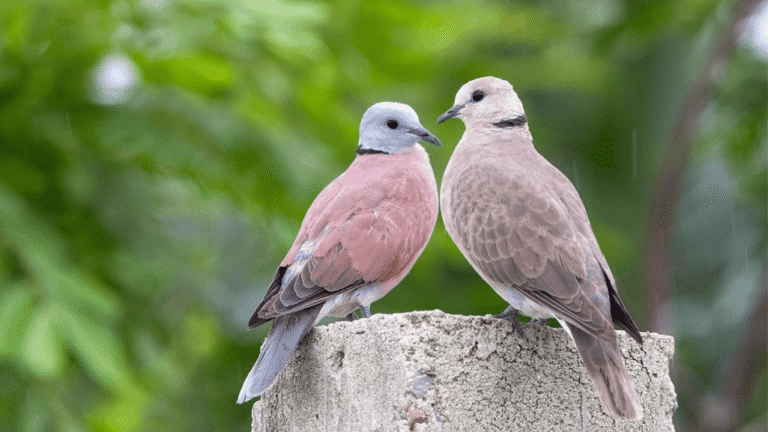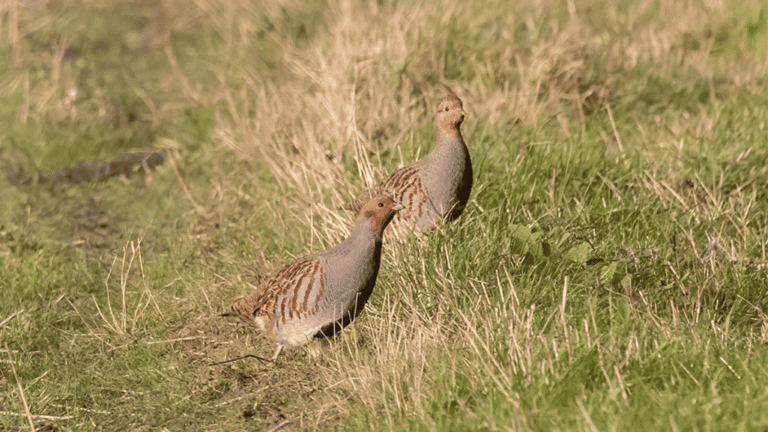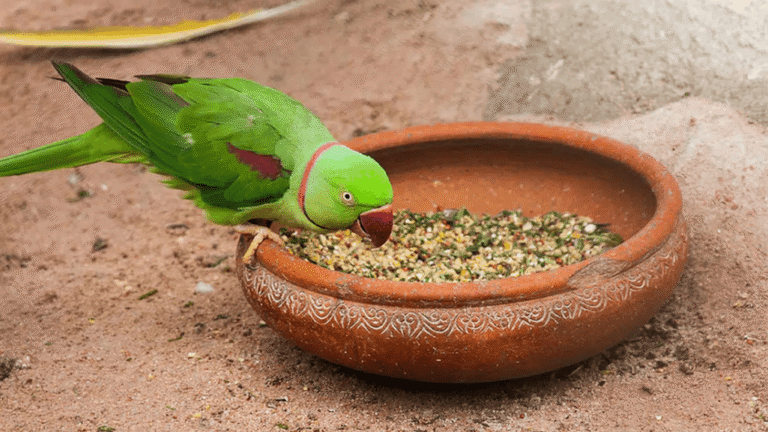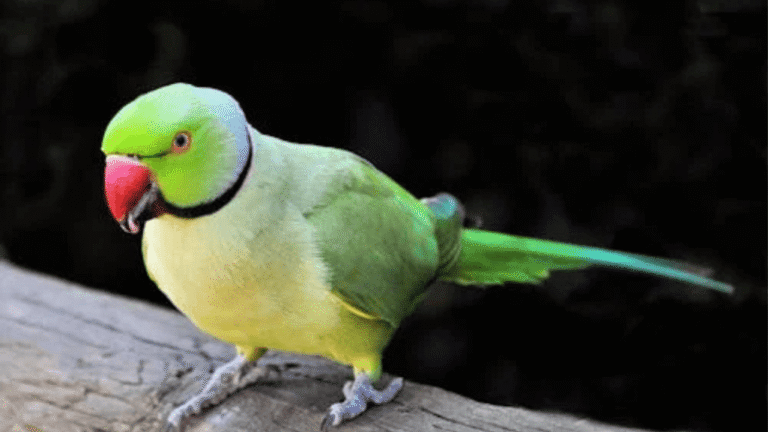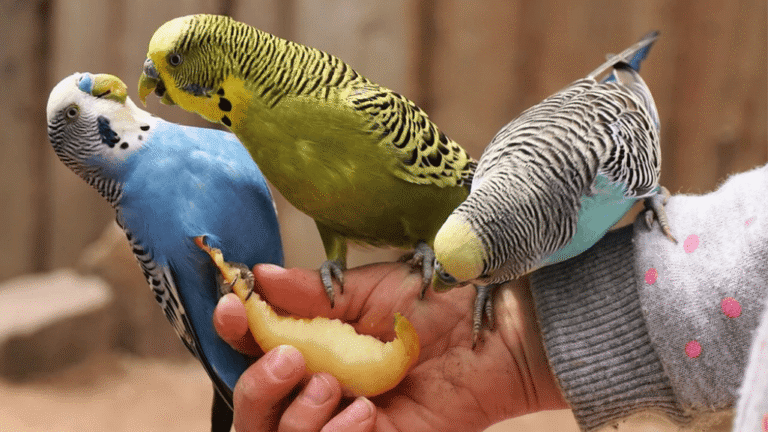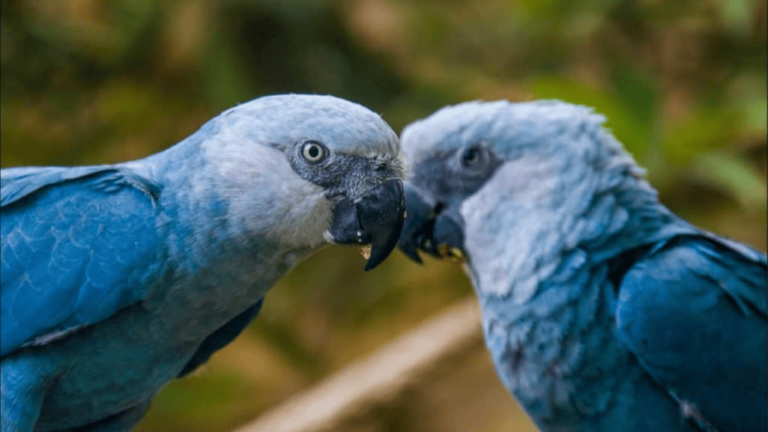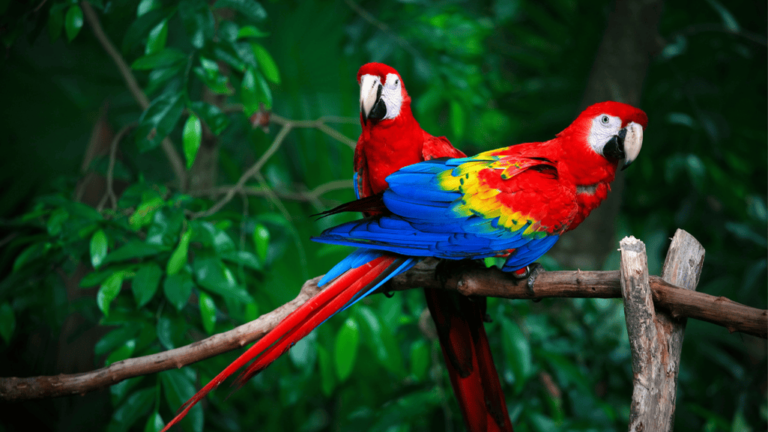The yellow chevroned parakeet is a treasure in the tropics. It’s known for its lively spirit and beautiful looks. This tropical bird brings joy to bird lovers everywhere.
Its bright colors attract many to learn about pet bird care. These vibrant bird species add more than beauty to our lives. They also bring resilience and joy.
These birds love to be around others and show off their flying skills. Caring for a yellow chevroned parakeet is a fun and educational journey.
Key Takeaways
- Yellow chevroned parakeets exhibit distinguished agility and playfulness.
- Their vibrant plumage makes them a prized addition to any avian collection.
- Learning the nuances of pet bird care is essential for these tropical birds.
- Understanding these birds’ social needs is crucial for their well-being.
- Conservation efforts for exotic avian species highlight the importance of education.
Discovering the Yellow Chevroned Parakeet
The tropical parrot is truly captivating, especially the Yellow Chevroned Parakeet. This bird adds color and life to the world of birds. Known as Brotogeris chiriri, it’s a colorful exotic pet bird loved by many. Its playful nature and bright colors make birdwatching a joy.
The Yellow Chevroned Parakeet is more than a small bird. It’s a symbol of tropical beauty. These birds live in different places and often gather in groups, showing their social side.
Understanding the Brotogeris Chiriri Species
This colorful parakeet is a delight to watch. It has dark eyes, a unique beak, and a high-pitched call. Studies in Los Angeles focus on how these birds adapt to city life.
Rare Sight: A Bird of Playful Agility and Vibrant Plumage
The Yellow Chevroned Parakeet is a sight to behold. Its green body and yellow chevrons are stunning. Watching them fly and feed is a top birdwatching opportunity.
Exploring the world of the Yellow Chevroned Parakeet is fascinating. It shows us the beauty and diversity of birds. Every encounter with these birds deepens our connection with nature.
The Natural Habitat of the Yellow Chevroned Parakeet
The natural habitat of the Yellow Chevroned Parakeet is in the lush areas below the Amazon basin. This tropical bird lives in diverse places like Bolivia, Brazil, Paraguay, and northern Argentina. It thrives in open woodlands, subtropical forests, savannas, and even towns.
Conservation efforts are key to keep these habitats balanced. Protecting the parakeet habitat helps this bird and many others. It keeps the ecosystem healthy and diverse.
- In urban and suburban California, especially from Los Angeles to the Palos Verdes Peninsula, parakeets live near exotic plants like silk-floss trees and palms.
- These birds have also adapted in southern Florida, Lima, Peru, and Puerto Rico. They show their ability to survive in different places.
Helping with conservation can greatly support tropical birds like the Yellow Chevroned Parakeet.
Even though it’s not considered endangered, conservation is still important. It protects the natural habitat and the ecosystems that support these birds.
The Yellow Chevroned Parakeet’s beauty reminds us of nature’s diversity and our duty to protect it. By working together, we can make a big difference in environmental conservation worldwide.
Caring for Your Colorful Parakeet Companion
If you love yellow parrots and want to give one a home, knowing how to care for colorful parakeets is key. They need a habitat that feels like their natural home, with things to do and places to move around. It’s also important to feed them right, with food that keeps their feathers bright and their energy up.
Learning how to care for your bird is more than just feeding and housing them. It’s about understanding their needs and how they behave. Parakeet care is successful when you really commit to it, as shown by people like Leslie Gillis from Secret Garden Aviaries in California. They see more people breeding and caring for parakeets the right way.
Essential Bird Care Tips for Yellow Parrot Enthusiasts
- Frequent Interaction: Social interaction is crucial for colorful parakeets, who thrive on companionship.
- Varied Diet: A diet of seeds, pellets, fresh fruits, and vegetables keeps them healthy and energetic.
- Mental Stimulation: Toys and activities that challenge their intellect prevent boredom and stress.
Daily Feeding Recommendations and Habitat Requirements
Follow the bird care guide for a balanced diet and a safe, fun space. Make sure the cage is big with natural perches and safe toys. Clean it often and give fresh water for bathing to keep your bird healthy and clean.
By following these tips, you meet your colorful parakeet’s needs and build a strong bond with them. This way, they will thrive under your care and add joy to your life with their bright colors and lively spirit.
The Captivating Beauty of Chevron Parakeets in Your Home
Adding a Yellow Chevroned Parakeet to your home can change any room. It brings vibrant colors and a lively spirit. These birds are a perfect choice to make your home more beautiful.
Using avian photography with these colorful parakeets adds an artistic touch. It brings a part of nature into our cities. High-quality images show off their beauty, making it a daily joy.
Transforming Spaces: Incorporating Avian Photography
Decorating with photos of Yellow Chevroned Parakeets makes any space more beautiful. It also brings joy and inspiration every day. These images draw attention and start conversations about birds and conservation.
Collectable Art: Celebrating Exotic Avian Species
For those who love birds, art pieces featuring Yellow Chevroned Parakeets are special. They range from detailed paintings to intricate sculptures. Each piece helps spread the love and knowledge for these amazing birds.
Enjoying the beauty of a colorful parakeet through art and photography does more than make your home look good. It makes life more enjoyable by bringing nature closer. This way, the beauty of Chevron Parakeets inspires and delights everyone who sees them.
Yellow Chevroned Parakeet: A Birdwatching Delight
For birdwatchers, the Yellow Chevroned Parakeet is a treat. They are known as Brotogeris chiriri and are tropical parrots. Their bright colors and lively behavior make birdwatching exciting.
These colorful parakeets eat seeds, fruits, blossoms, and nectar. Watching them feed shows how they help their ecosystems. Their parakeet breeding habits also reveal their social lives and how they adapt.
- Location: Found in southern Bolivia, Brazil, and northwestern Argentina.
- Size and Appearance: They are 20–25 cm long, weigh 65–70 grams, and have a 30 cm wingspan.
- Population Trends: Over 260,000 were brought to the U.S. in the 60s and 70s. Many now live in cities.
This birdwatching opportunity is great because parakeets adapt well. They can be seen in cities like Miami and Los Angeles. Watching them fly or interact is a joy for all.
The Yellow Chevroned Parakeet shows us nature’s beauty and why we must protect it. They are a delight to see, whether in Brazil or suburban America. These tropical parrots inspire and enchant many.
Yellow Chevroned Parakeets offer amazing birdwatching opportunities. They help us learn about nature and bring happiness. Their story shows how wildlife and cities can coexist.
Maintaining the Health and Happiness of Your Pet Bird
To keep your pet bird happy and healthy, you need to focus on pet care and bird care. It’s important to understand their behavior. This helps create a good environment for them.
Every bird species has its own needs. This includes what they eat and how they behave. Knowing these helps keep your bird healthy and full of life.
Behavior Traits and Troubleshooting Tips
It’s key to know when a bird’s behavior is normal or not. For example, if a yellow-chevroned parakeet has ruffled feathers a lot, it might be stressed or uncomfortable. To fix this, spend time with your bird gently and make sure their environment is stable and interesting.
Feather picking or screaming too much can mean your bird needs more care. This might include changing their food or home.
Addressing Common Health Concerns in Vibrant Bird Species
It’s crucial to address health issues specific to your bird’s type. For example, yellow-chevroned parakeets need a diet rich in quality pellets and fresh fruits and veggies. Skipping this can lead to health problems like liver and heart diseases.
Also, make sure your bird always has clean water. This helps prevent dehydration and keeps their body working well.
- Mimicking natural habitats reduces stress and promotes natural behaviors.
- Regular veterinary check-ups can preemptively tackle the onset of diseases.
- Engaging toys and activities can alleviate boredom and prevent destructive habits.
By following these bird care tips, you can greatly improve your pet’s life. It’s not just about their health. It’s also about building a strong bond with them through caring and attention.
The Role of Breeding in Parakeet Species Conservation
Breeding is key to saving parakeet species, especially the rare species. Through careful parakeet breeding, experts help grow their numbers and genetic variety. This is crucial because these birds are often hunted and face extinction.
Conservation efforts rely on breeding habits that are sustainable and eco-friendly. Good breeding practices, along with expert care, help in successful conservation efforts. It’s not just about more birds but also creating a healthy place for them to live and breed well.
Implementing Parakeet Breeding Techniques for Rare Species
For rare species of parakeets, special breeding information and methods are needed. This includes choosing breeding pairs that are genetically diverse to avoid health problems in their offspring. This strategy helps grow the genetic variety and health of the bird populations.
Supporting Global Efforts Through Responsible Breeding Habits
Being part of responsible parakeet breeding helps with global conservation efforts. Teaching the bird breeding community about sustainable practices is vital. Working together, breeders, conservationists, and researchers can make a big difference in saving parakeet species.
- Regular monitoring of breeding progress and health assessments.
- Integration of habitat enrichment in breeding programs to mimic natural environments.
- Public awareness campaigns to promote the importance of biodiversity and species conservation.
By focusing on these areas, breeding programs can grow parakeet populations. They also help keep the ecosystem balanced and diverse. This ensures that future generations can enjoy these colorful and charming birds.
Joining the Bird Enthusiasts Community
If you love parakeets and own exotic pet birds, finding a community of bird lovers is exciting. These groups share knowledge on caring for parakeets and help us appreciate these birds more. They offer a wealth of benefits, from tips on parakeet care to birdwatching adventures.
Being part of bird care communities is vital for both new and seasoned bird owners. These groups are full of tips and advice. They help ensure your pet bird gets the best care.
Sharing Experiences and Tips With Fellow Parakeet Owners
In these communities, people share valuable insights and experiences. They help each other with the joys and challenges of bird ownership. Forums and social events are where they discuss the latest in bird care and solve common problems.
Finding Birdwatching Opportunities for Exotic Pet Bird Lovers
Birdwatching tours and events are great parts of these communities. They let members see parakeets in their natural habitat. These activities deepen our connection with nature and promote conservation.
Joining a bird enthusiasts community enriches your life. You’ll learn more, help parakeets, and enjoy the joy they bring. It’s a journey of learning and passion that makes caring for birds rewarding.
Conclusion
Exploring the world of the Yellow Chevroned Parakeet has shown us their vibrant colors and lively social nature. These birds are a part of South America’s amazing wildlife. It’s crucial to care for them properly, both as pets and for their species.
Conservation efforts are key to their survival. We must fight against habitat loss and illegal trade. This is our mission.
Our duties include creating the right living spaces and feeding them a diet of seeds and fruits. We must also watch out for health issues like obesity. And make sure they have friends to keep them happy.
But it’s the thrill of birdwatching that really draws us in. Seeing these birds in their natural habitat fills us with joy and wonder. Their ability to flock and help spread seeds is vital for the environment.
In the end, we promise to celebrate and protect these parakeets. By learning, sharing what we know, and helping with conservation, we can make a difference. Our actions in caring for these birds and supporting conservation efforts will help keep their world balanced.
As we enjoy watching birds and the joy they bring, we also help ensure their future. We are working to keep these amazing creatures safe for generations to come.
FAQ
What is the Yellow Chevroned Parakeet?
What makes the Yellow Chevroned Parakeet a unique pet bird?
How can I provide proper care for my Yellow Chevroned Parakeet?
Where do Yellow Chevroned Parakeets naturally live?
Why are conservation efforts important for Yellow Chevroned Parakeets?
What should I feed my Yellow Chevroned Parakeet?
What artistic representations of Chevron Parakeets are available?
How does birdwatching enhance the experience of observing Yellow Chevroned Parakeets?
How can I maintain the vibrant colors of my parakeet’s feathers?
What should be considered when breeding Yellow Chevroned Parakeets?
How can joining a bird enthusiasts community benefit me and my parakeet?
In the peaceful landscapes of the Bahamas and the Greater Antilles, the Key West Quail-Dove finds its home. Known as Geotrygon chrysia, this bird is a treasure among Florida birds. Though it doesn’t live in the Florida Keys anymore, it sometimes visits, adding beauty to the Key West wildlife. Bird watchers in bird watching Key West dream of seeing this rare bird in the tropical and dry forests, shrublands, and moist forests it loves.
Key Takeaways
- The Key West Quail-Dove is still common in the Caribbean, showing the area’s rich wildlife.
- Even though it’s not considered endangered, it has a rich history with the Florida Keys.
- Its varied diet and unique breeding habits help it adapt to different environments.
- Seeing this dove is rare but exciting, like at the Deering Estate in Miami.
- Photographing the Key West Quail-Dove is hard because it’s hard to find and lives in dense forests.
- Trying bird watching Key West might let you see this special dove, making it more thrilling.
- It’s important to understand and protect the homes of Florida birds like the Key West Quail-Dove for their future.
Exploring the Unique Characteristics of the Key West Quail-Dove
The Key West Quail-Dove is a standout among endangered birds. Its unique looks and sounds have drawn bird lovers. This bird’s story highlights the importance of ornithology Key West research.
Physical Description and Identification
This bird has a dark, rust-colored back and bronze-green sheen on its head and neck. It’s known for a white stripe on its face against its red feathers. Males are about 11 3/4 inches long and have a wingspan of 17 1/2 inches, making them a notable size among Key West birds.
Vocalization Patterns and Calls
The Key West Quail-Dove makes a beautiful “hooooooo” sound that gets louder. It also coos softly, saying “Whoe-whoe-oh-oh-oh.” These sounds help identify it in the woods. Researchers say these calls are key in mating and defending against predators.
Studies show the Vocalization patterns and physical characteristics of the Key West Quail-Dove make it special. It’s a key focus for scientists and conservationists.
Understanding the Key West Quail-Dove’s Distribution
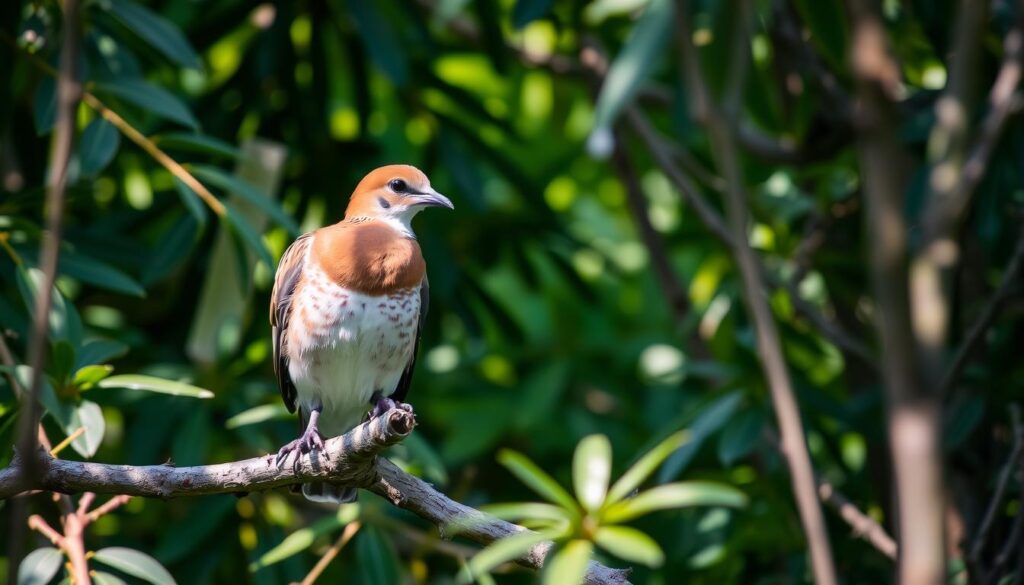
The Key West Quail-Dove is a symbol of tropical beauty, linked to the Caribbean’s lush landscapes. It lives in the Bahamas and the Greater Antilles. These places are key for bird watching destinations and bird conservation efforts.
These birds were once rare in Florida birds sightings, mainly in the southern parts of the state. The Florida Keys are famous for their wildlife and conservation efforts.
Habitats and Regions: From the Bahamas to the Greater Antilles
Key West Quail-Doves live in different habitats like dry forests and limestone areas. Their presence shows how rich and diverse their environments are. In Cuba, conservation projects help protect their habitats and many other bird species.
These birds can be found in places like New Providence and Cuba. Cuba is home to over 380 bird species and has 28 Important Bird Areas (IBAs). This makes it a key place for bird conservation efforts.
Studies show how the Key West Quail-Dove behaves and lives across its range. They sometimes appear in Florida during hurricanes or in mangrove forests during breeding season. This shows how they interact with their environments in unique ways.
Learning about the Key West Quail-Dove’s habits and habitats helps us understand Caribbean birds better. It also shows why working together is important for bird conservation. This knowledge helps protect bird watching destinations from environmental changes and human actions.
Threats to the Key West Quail-Dove’s Environment
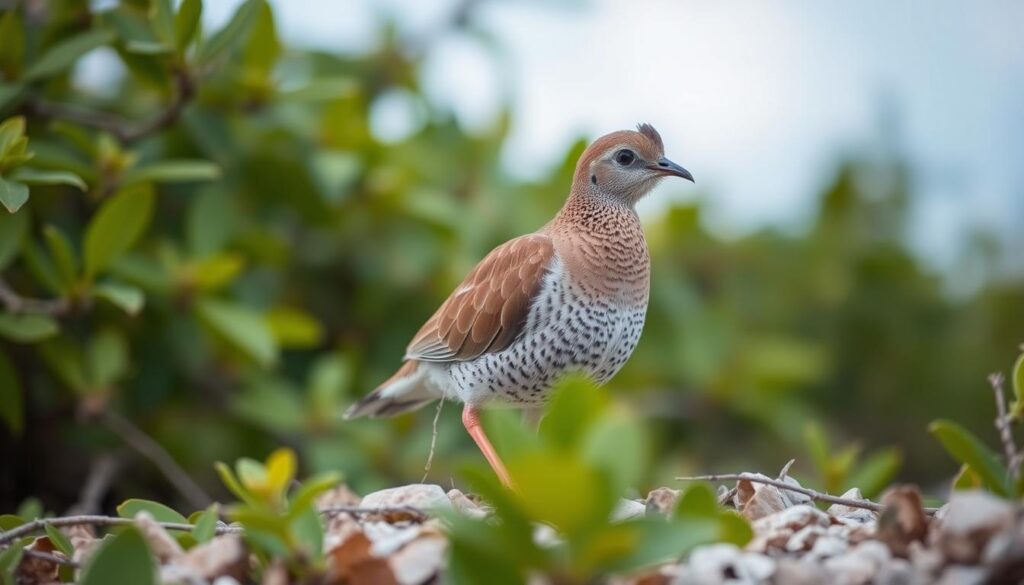
The Key West Quail-Dove needs urgent conservation due to environmental threats. It’s listed as Least Concern, but habitat loss and human impact are big problems. These threats can get worse if we don’t act fast.
Human Impact and Habitat Loss
Humans are harming the Key West by building more cities and farms. This destroys the homes of many endangered birds, including the Key West Quail-Dove. It also breaks up the land these birds need to survive.
Without enough land, these birds lose their food and places to nest. This makes it harder for them to live.
Conservation Status and Efforts
There are efforts to save the Key West Quail-Dove from these threats. These include fixing up habitats and making laws to protect them. One key step is the Federal Migratory Bird Special Purpose Game Bird permit.
| Permit Type | ePermit ID | Cost |
|---|---|---|
| Federal Migratory Bird Special Purpose Game Bird | 3-200-10e | $75 (non-refundable) |
Also, teaching people about birds and nature is crucial for conservation. By learning how important it is to protect wildlife, people can help. Together, we can make a safe place for the Key West Quail-Dove and other animals.
Key West Quail-Dove’s Diet and Foraging Behavior
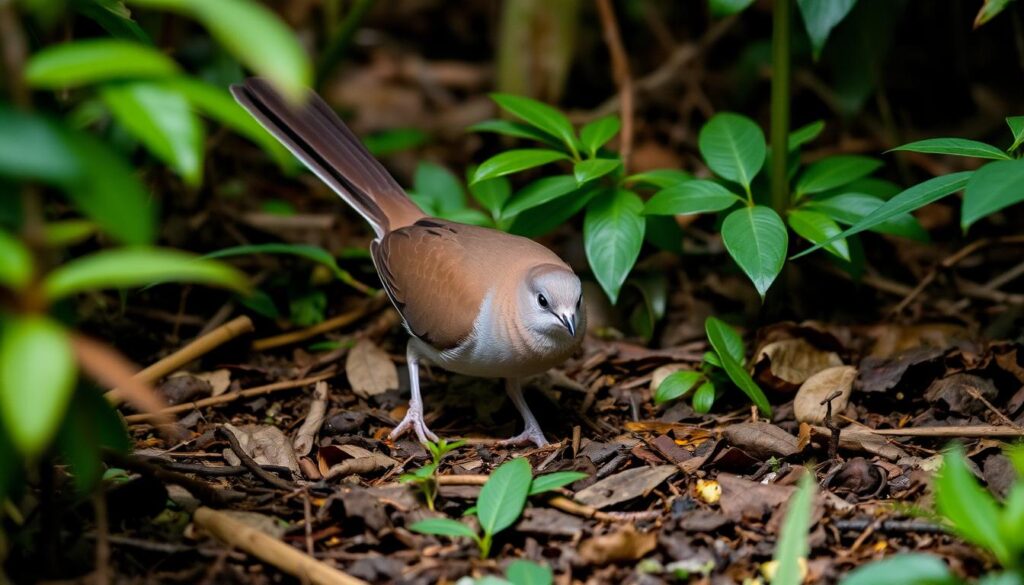
The Key West Quail-Dove is a unique bird species in Key West. It has a varied diet that shows how well it fits into its environment. Learning about their eating habits is interesting for bird lovers and helps with conservation.
Fruit and Seed Preferences
Key West Quail-Doves spend most of their time on the ground, looking for seeds, berries, and fruits. These foods make up most of what they eat. By eating these, they help spread seeds, which helps plants grow in Florida.
They especially like eating poisonwood fruit, which is common in their area. Eating poisonwood is important for their survival. It also helps with seed dispersal, which is key for their habitat.
The Importance of Poisonwood Fruit in Their Diet
Poisonwood fruit is a big part of the Key West Quail-Dove’s diet. Despite its name, it’s vital for the bird. It helps the bird and also spreads seeds, which is good for the environment.
Studies show that how these birds eat can tell us about the health of their environment. They pick up seeds and fruits, helping nature to heal and grow.
To learn more about the Quail Dove’s home and needs, check out options for creating safe outdoor spaces here.
| Fruit | Preference by Key West Quail-Dove |
|---|---|
| Poisonwood | Highly Preferred |
| Guazuma parvifolia | Moderately Preferred |
| Hamelia patens | Moderately Preferred |
| Ficus havanensis | Avoided |
This table shows the different fruits that are key to the Key West Quail-Dove’s diet. It highlights their specific likes, which helps scientists understand their needs better.
Nesting Habits of the Key West Quail-Dove
The Key West Quail-Dove is a key species in Florida birds. Its nesting habits are vital for bird conservation. Knowing these habits helps protect these unique birds.
Nest Construction and Egg-Laying
The Key West Quail-Dove builds a fragile platform for its nest. It’s usually in dense thickets or low in small trees. This helps protect their eggs and young. They lay two eggs that match their surroundings, helping them hide from predators.
Parental Roles and Chick Rearing
Both parents take turns caring for their eggs during the 12-day incubation. After hatching, the chicks depend on their parents for food and safety. This teamwork is key to their survival.
Studying the Key West Quail-Dove’s breeding and parenting helps us understand Florida birds better. It also highlights the importance of protecting their habitats. Resources like Java Sparrow bird conservation can inspire conservation efforts.
The Significance of Bird Watching Destinations for the Key West Quail-Dove
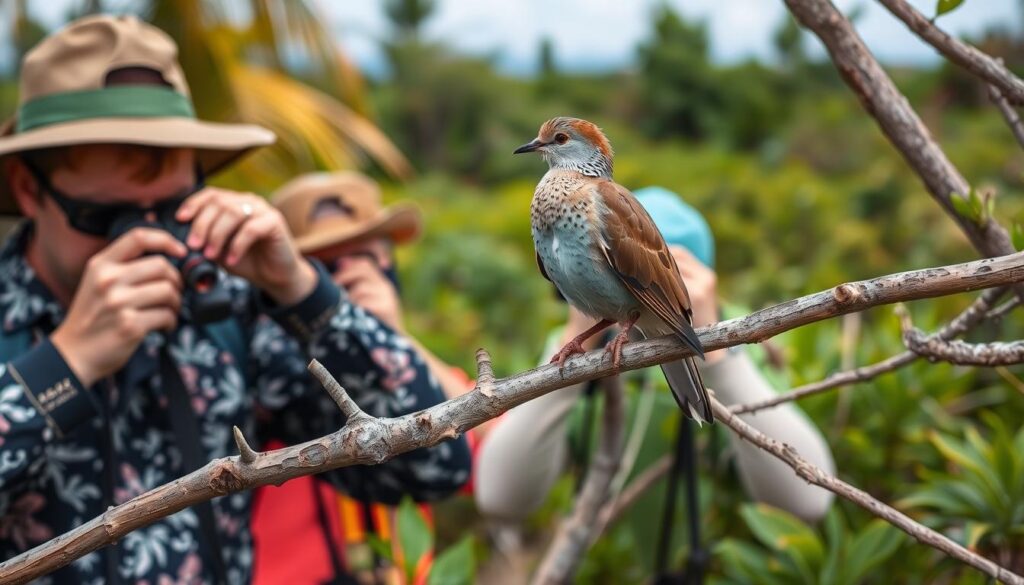
Key West is known for its lively Key West wildlife. It invites bird watchers from all over the world. The Key West Quail-Dove is a special bird that shows how rich the area is in wildlife. It also highlights the importance of bird watching in protecting nature.
This bird is known for its stunning looks, as John James Audubon once said. Bird watching in Key West brings joy to those who do it. It also helps the local environment and economy by supporting eco-tourism.
| Year | Event | Impact |
|---|---|---|
| 1832 | Audubon names the Key West Quail-Dove | Increase in initial interest and documentation |
| 2002 | Last sighting in South Florida | Highlighted rarity and urgent conservation need |
| Annual | Florida Keys Birding and Wildlife Festival | Attracts global birders, spotlighting Key West’s avian diversity |
Bird watching spots like Key West are key for research and learning. They bring together experts and bird lovers to study birds like the Key West Quail-Dove. This helps us understand how they move, live, and behave.
Visiting these places helps keep the interest in bird watching Key West alive. It also supports the work of saving their homes, which helps local conservation efforts.
Birding events like the Florida Keys Birding and Wildlife Festival make people more aware of these issues. They show off the beauty of the Key West Quail-Dove and talk about the big challenges birds face worldwide.
In short, Key West and its bird watching spots are crucial for saving the Key West Quail-Dove and other birds. Every time someone sees a bird, takes a photo, or visits, they help send a strong message. This message is about caring for our planet and working together to protect it.
Ornithology Key West: Studying Local Bird Species
In Key West, ornithology is more than a study; it’s a way to protect nature. The area is home to a wide variety of Florida birds. These birds make Key West a key spot for bird conservation efforts.
Scientists here study the local birds’ behaviors and how they live. They focus on species like the Key West Quail-Dove. This work is vital for protecting local and Florida’s ecosystems.
Research Contributions to Bird Conservation
Studies on the endangered White-fronted Quail-Dove show how changes affect them. Researchers in Key West gather important data. This helps make plans to save these birds and others.
The Role of Citizen Science in Bird Observation
Citizen science is key in Key West. Local people help by recording bird sightings and behaviors. This work adds to the science and connects people with nature.
This mix of professional research and community help is powerful. It helps protect birds and their homes. This approach is a model for bird conservation worldwide.
Key West Wildlife: Coexisting with the Key West Quail-Dove
In Key West, the Key West Quail-Dove is a key part of the local wildlife. It’s one of the many endangered bird species that make the area’s ecosystems rich and diverse. Andros Island, with its vast 6,000 km2, is a vital habitat for these birds, much like Florida’s own environments.
Despite having fewer than 10,000 people, Andros Island is seeing more development. This highlights the need for a balance that respects both human needs and the wildlife. The eastern coasts and northern islands are seeing more activity, which affects the Key West wildlife.
A study from April 24 to April 30, 2010, showed the importance of Andros’s pine forests and coppice. These forests, especially the old-growth ones in South Andros, are crucial for many species. However, fires and human actions have damaged much of the second-growth forests, which is a common issue for endangered birds.
It’s vital to monitor and conserve these forests to protect the Key West wildlife. This includes the endangered bird species that call these forests home.
Research on human development and bird populations is crucial. A study with 444 FeederWatchers in Florida showed how the Eurasian Collared-Dove has spread since its introduction in 1982. While these doves do well in areas changed by humans, native birds like the Key West Quail-Dove face a delicate balance.
This balance tells us a lot about our habitats and our responsibility to protect them. By working together, we can help ensure that many Florida birds will still be around for future generations. This will keep our skies beautiful and our ecosystems healthy.







